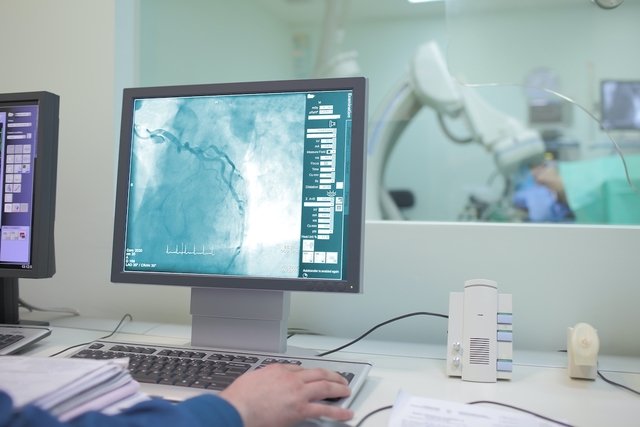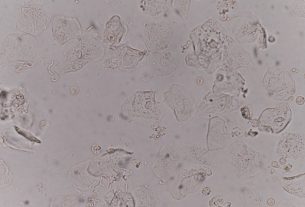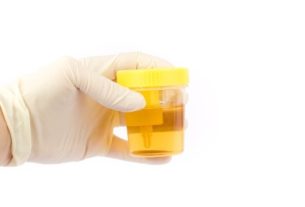Tomography angiography, or CT angiography, is a diagnostic exam that combines two techniques, angiography and computed tomography, using modern 3D equipment, which allows you to visualize and detect changes in veins and arteries, such as aneurysm, obstruction or narrowing of blood vessels. .
This exam is normally requested by a cardiologist or neurologist, to diagnose coronary or brain diseases, but it can also be requested to evaluate blood vessels in other parts of the body, such as the chest, abdomen or lungs, for example.
CT angiography can be performed in hospitals or specialized clinics, and the results must be analyzed by a cardiologist or neurologist, who may also indicate the performance of other complementary tests to assess the functioning of the brain or heart.

What is it for
Tomography angiography is recommended by the doctor to clearly observe the internal and external part, diameter and involvement of blood vessels, clearly showing the presence of calcium plaques or fatty plaques in the coronary arteries, and also serves to clearly visualize cerebral blood flow , or in any other area of the body, such as the lungs or abdomen, for example.
Generally, this exam is requested when there is suspicion of:
- Obstruction in blood vesselscaused by the accumulation of fatty plaques or calcifications, or clots, which prevent the blood from circulating normally;
- Narrowing of blood vesselswhich compromise the blood supply to a certain region of the body;
- Abnormal dilation of blood vesselsas not a case of aneurysm;
- Malformations of veins and arteries brain or heart;
- Injuries to blood vessels which can hinder blood circulation;
Furthermore, CT angiography can be requested by the doctor before or after the placement of a prosthesis in the aorta, allowing monitoring and evaluation of vascular changes.
This exam also allows you to evaluate the blood supply in the blood vessels within a tumor, before surgery, or other procedures such as chemoembolization or selective internal radiotherapy.
Main types of CT angiography
There are several types of CT angiography, with different indications and include:
Additionally, CT angiography can be done to evaluate changes in the blood vessels of the kidneys, liver, pelvis, hands, arms, feet or legs.
How the exam is carried out
Tomography angiography is a painless and quick exam that lasts an average of 10 minutes and to perform the exam, the person must lie on the tomography machine table, in different positions, which depends on the region of the body to be evaluated by the doctor. This tomography device uses radiation to generate images of blood vessels that are viewed on the computer and evaluated by the doctor.
Generally, before starting the exam, saline solution is administered into the vein, so that the doctor can inject iodine contrast into the vein, which allows for better image capture and assessment of the blood vessel, whether there are calcified plaques or whether the blood flow is impaired. compromised somewhere.
However, CT angiography can also be done without the use of contrast, especially in people with kidney problems.
How to prepare for the exam
To perform CT angiography, some precautions are necessary for its preparation, such as:
- Tell your doctor if you are allergic to iodine or any other medicine or food before taking the exam;
- Tell your doctor if you use oral medicines for diabetessuch as metformin (Glucoformin or Glifage), before taking the exam;
- Bring a list of all medicationsvitamins and nutritional supplements that you take frequently;
- Inform if you have health problemssuch as hyperthyroidism, kidney failure or epilepsy;
- Fast for about 4 hours before the exam;
- Take your usual medicines normallywith little water, as per medical advice;
- Avoid consuming caffeine for up to 48 hours before the exam;
- Avoid taking medication for erectile dysfunctionin the case of men, for up to 48 before the exam.
Furthermore, minutes before the CT angiography, some people may need to take medication to slow the heart rate or to dilate blood vessels, in order to improve their visualization of cardiac images.
When it should not be done
Tomography angiography should not be performed in suspected or confirmed cases of pregnancy. Furthermore, iodinated contrast should not be used by people who are allergic to iodine or have kidney failure.
Possible complications during the examination
CT angiography is a safe exam, generally not causing complications during the procedure. However, in rare cases, allergic or anaphylactic reactions to iodine contrast may occur.
Therefore, CT angiography must be carried out by a radiologist, in specialized clinics or hospitals, which have equipment for medical emergencies and immediate care if any complication occurs.
Bibliography
- WALKOFF, L.; et al. Imaging primer for CT angiography in peripheral vascular trauma. Emerg Radiol. 28. 1; 143-152, 2021
- SARTOR, K.; NADJMI, M. Angiotomography for aneurysms and arteriovenous malformations of the head and neck. Neuroradiology. 17. 2; 89-100, 1979
- GHEKIERE, O.; et al. Image quality in coronary CT angiography: challenges and technical solutions. Br J Radiol. 90. 1072; 20160567, 2017
- LIESE, J. Angiotomography: A Preliminary Report Grover. Radiology. 75. 2; 1960

Sign up for our newsletter and stay up to date with exclusive news
that can transform your routine!
Warning: Undefined array key "title" in /home/storelat/public_html/wp-content/plugins/link-whisper-premium/templates/frontend/related-posts.php on line 12
Warning: Undefined array key "title_tag" in /home/storelat/public_html/wp-content/plugins/link-whisper-premium/templates/frontend/related-posts.php on line 13



